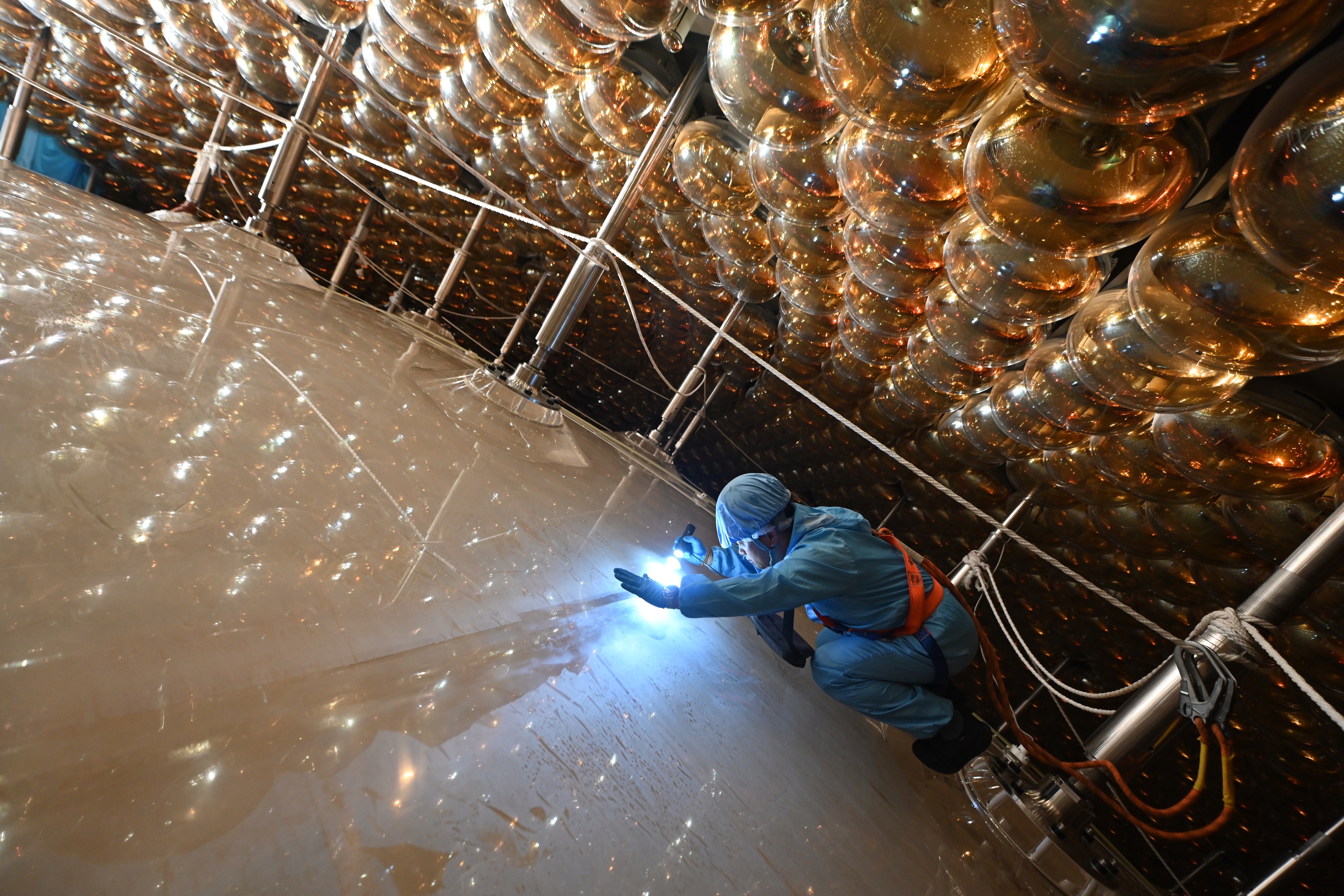The first results from the world’s largest neutrino detector have just been published, and they reveal the most precise measurements of neutrino parameters yet.
After running the detector — the Jiangmen Underground Neutrino Observatory (JUNO), in southern China — for just shy of two months, the researchers were able to measure the parameters of the different types, or “flavors,” of neutrinos with unprecedented precision.
You may like
“Before switching on JUNO, these parameters came from a long series of experiments … Half a century of effort is distilled in the numerical value of these two parameters,” Gioacchino Ranucci, deputy spokesperson for JUNO, told Live Science. “In 59 days we have overcome 50 years of measurement. So this gives an idea of how powerful [JUNO] is.”
The ghostly mystery of neutrinos

The JUNO detector seen from the outside. (Image credit: JUNO collaboration)
Neutrinos are perhaps the most mysterious of the known particles. Every second, trillions of them pass through your body. However, they very rarely interact with you or any other matter and weigh next to nothing, giving them the nickname “ghost particles.” This makes the neutrino one of the hardest particles to study, as most will simply go through a detector without leaving a trace.
But physicists are eager to know more about neutrinos because they may be able to break the Standard Model of particle physics, which is our best explanation of the subatomic world. While it is an incredibly successful theory, it is not quite complete — and something that it did not predict was that neutrinos would have mass.
The discovery that ghost particles do, in fact, have mass (for which the 2015 Nobel Prize in physics was awarded) is due to something called neutrino oscillation. Neutrinos come in three flavors (electron, muon and tau), and they switch between these identities as they move through time and space. The reason for this strange phenomenon is not yet fully understood, but it may hold the key to exciting new physics.
“The oscillation phenomenon means that neutrinos are so far the only particle for which there is a property that the Standard Model does not predict,” Ranucci said. “So, neutrinos are the only portal to physics beyond the Standard Model.”
To explore neutrino properties and probe beyond the Standard Model, scientists have built large detectors deep underground. Here, Earth’s crust forms a natural shield from most other particles, while the ghost particles pass through and have the chance to make their presence known in the detector.
You may like

Final preparations for JUNO. Inside the white sphere is 20,000 tons of liquid which, when struck by a neutrino, produces a flash of light that is picked up by sensors surrounding the sphere. (Image credit: JUNO collaboration)
JUNO is the latest and largest of these neutrino detectors. It is a 115-foot-wide (35 meters) sphere that holds 19,700 tons (20,000 metric tons) of a liquid scintillator. This liquid is specially formulated to interact with a neutrino and produce a flash of light. Around the edge of the tank, there are sensors that can pinpoint the flash and provide useful information about the neutrino that caused it.
Previous neutrino detectors have worked on the same principle; JUNO is simply much bigger. It contains 20 times more liquid scintillator than any previous experiment, making JUNO significantly more sensitive to neutrinos. This has allowed physicists to measure the parameters that describe the oscillation between different neutrino flavors with unprecedented precision, according to the researchers.
A hunt for new physics
The JUNO team has high ambitions for the future, and these first results show they are on track to meet those goals. With more time and more data, the researchers hope to achieve even better precision on these oscillation parameters.
Over its lifetime, JUNO may be able to solve longer-standing mysteries in physics. Physicists expect to be able to order the neutrino mass states from the heaviest to the lightest and perhaps even find clues as to why we don’t see as much antimatter as matter in the universe.
For now, these ghostly particles have given tantalizing whispers of physics beyond our current theories. With bigger and better neutrino detectors, our understanding of the universe is coming into sharper focus.

